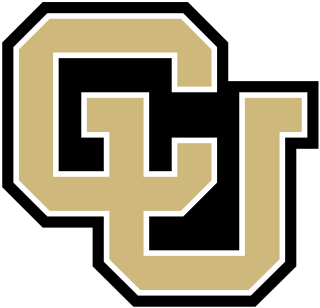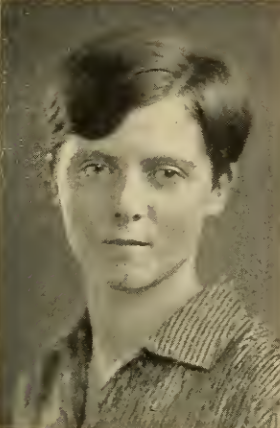
Physical therapy (PT), also known as physiotherapy, is a healthcare profession, as well as the care provided by physical therapists who promote, maintain, or restore health through patient education, physical intervention, disease prevention, and health promotion. Physical therapist is the term used for such professionals in the United States, and physiotherapist is the term used in many other countries.

A respiratory therapist is a specialized healthcare practitioner trained in critical care and cardio-pulmonary medicine in order to work therapeutically with people who have acute critical conditions, cardiac and pulmonary disease. Respiratory therapists graduate from a college or university with a degree in respiratory therapy and have passed a national board certifying examination. The NBRC is responsible for credentialing as a CRT, or RRT,
Occupational therapists (OTs) are health care professionals specializing in occupational therapy and occupational science. OTs and occupational therapy assistants (OTAs) use scientific bases and a holistic perspective to promote a person's ability to fulfill their daily routines and roles. OTs have training in the physical, psychological, and social aspects of human functioning deriving from an education grounded in anatomical and physiological concepts, and psychological perspectives. They enable individuals across the lifespan by optimizing their abilities to perform activities that are meaningful to them ("occupations"). Human occupations include activities of daily living, work/vocation, play, education, leisure, rest and sleep, and social participation.

Occupational therapy (OT) is a healthcare profession that involves the use of assessment and intervention to develop, recover, or maintain the meaningful activities, or occupations, of individuals, groups, or communities. The field of OT consists of health care practitioners trained and educated to improve mental and physical performance. Occupational therapists specialize in teaching, educating, and supporting participation in any activity that occupies an individual's time. It is an independent health profession sometimes categorized as an allied health profession and consists of occupational therapists (OTs) and occupational therapy assistants (OTAs). While OTs and OTAs have different roles, they both work with people who want to improve their mental and or physical health, disabilities, injuries, or impairments.
Manual therapy, or manipulative therapy, is a physical treatment primarily used by physical therapists, occupational therapists to treat musculoskeletal pain and disability; it mostly includes kneading and manipulation of muscles, joint mobilization and joint manipulation. It is also used by Rolfers, massage therapists, athletic trainers, osteopaths, and physicians.
A Doctor of Physical Therapy or Doctor of Physiotherapy (DPT) degree is a qualifying degree in physical therapy. In the United States, it is considered a graduate-level first professional degree or doctorate degree for professional practice. In the United Kingdom, the training includes advanced professional training and doctoral-level research.
The Master of Physical Therapy is a post baccalaureate degree conferred upon successful completion of an accredited physical therapy professional education program.

Samuel Merritt University (SMU) is a private university focused on health sciences with its main campus in Oakland, California, and other facilities in Sacramento, San Mateo and Fresno. It was an affiliate of the Sutter Health Network and Alta Bates Summit Medical Center until becoming a wholly independent institution in January, 2022, upon its disaffiliation from Sutter Health. It is the only provider of physical therapists, occupational therapists, and physician assistants and is the largest source of nurses in the greater East Bay. Formerly known as Samuel Merritt College, it was founded in 1909 as a hospital school of nursing. Today, it stands as a comprehensive health sciences university, encompassing three colleges: College of Nursing, College of Health Sciences, and College of Podiatric Medicine

Equine-assisted therapy (EAT) encompasses a range of treatments that involve activities with horses and other equines to promote human physical and mental health. Modern use of horses for mental health treatment dates to the 1990s. Systematic review of studies of EAT as applied to physical health date only to about 2007, and a lack of common terminology and standardization has caused problems with meta-analysis. Due to a lack of high-quality studies assessing the efficacy of equine-assisted therapies for mental health treatment, concerns have been raised that these therapies should not replace or divert resources from other evidence-based mental health therapies. The existing body of evidence does not justify the promotion and use of equine-related treatments for mental disorders.
Aquatic therapy refers to treatments and exercises performed in water for relaxation, fitness, physical rehabilitation, and other therapeutic benefit. Typically a qualified aquatic therapist gives constant attendance to a person receiving treatment in a heated therapy pool. Aquatic therapy techniques include Ai Chi, Aqua Running, Bad Ragaz Ring Method, Burdenko Method, Halliwick, Watsu, and other aquatic bodywork forms. Therapeutic applications include neurological disorders, spine pain, musculoskeletal pain, postoperative orthopedic rehabilitation, pediatric disabilities, pressure ulcers, and disease conditions, such as osteoporosis.
The American Orthopaedic Society for Sports Medicine (AOSSM) promotes sports medicine education, research, communication, and fellowship and includes national and international orthopaedic sports medicine leaders. The Society works closely with many other sports medicine specialists, including athletic trainers, physical therapists, family physicians, and others to improve the identification, prevention, treatment, and rehabilitation of sports injuries. Formed in 1972 as a forum for education and research with 100 members, the AOSSM today has to more than 2,000 members.
The Nigeria Society of Physiotherapy (NSP) is the national professional association representing Nigerian-trained physiotherapists as well as foreign-trained physiotherapists practicing in Nigeria. The society was inaugurated on 29 August 1959 at a meeting held the Physiotherapy Department of the University College Hospital, Ibadan by a group of Nigerian and British Physiotherapists.

Fox College is a Private for-profit college with its main campus in Tinley Park, Illinois. It originally was founded in 1932, and most students come from the Chicago area. Fox College awards associate degrees.

Physical therapy education varies greatly from country to country. Worldwide, physical therapy training ranges from basic work site education in hospitals and outpatient clinics to professional doctoral degree and masters programs.
David F. Levine is an American author, a professor of physical therapy, and a biomedical scientist. He holds the Walter M. Cline Chair of Excellence in Physical Therapy at the University of Tennessee at Chattanooga. His research and publication contributions focus on veterinary rehabilitation and physical therapy, including canine physical therapy, animal assisted therapy, gait analysis and motion analysis, the use of modalities such as extracorporeal shockwave therapy, electrical stimulation, and therapeutic ultrasound, as well as clinical infectious disease research and Ehlers-Danlos Syndrome research.
Nepal currently only has two physiotherapy programs, available through Kathmandu University and Pokhara University as a bachelor's degree. It is equivalent to four-and-a-half years of full-time study. The minimum level of education to start this program is upper secondary. While there were only around 30 graduates with a Bachelor in Physiotherapy degree in 2007, the total number of graduates have now proliferated over the years. In 2022, several Nepalese physiotherapists have now completed PhD from reputed universities around the globe. Nepal also has a three year Certificate level Physiotherapy degree which produces Physiotherapy Assistant who have limited scope of practice to Physiotherapists with a Bachelor or Master degree.
Florence May Peterson Kendall was an American physical therapist based in Baltimore, Maryland. She was inducted into the Maryland Women's Hall of Fame in 2002.

The University of Colorado Physical Therapy Program is administered by the Department of Physical Medicine & Rehabilitation (PM&R) and the University of Colorado School of Medicine. The program has a focus on research, education, and service related to physical therapy and rehabilitation science. The Residential Doctor of Physical Therapy degree (DPT) Pathway is located at the University of Colorado Anschutz Medical Campus, and the Hybrid DPT Pathway is located at the University of Colorado Colorado Springs (UCCS).

Elizabeth Copeland Addoms was an American physical therapist who worked mainly on rehabilitation for children with cerebral palsy. She was director of the physical therapy program at New York University (NYU) from 1946 to 1970.








